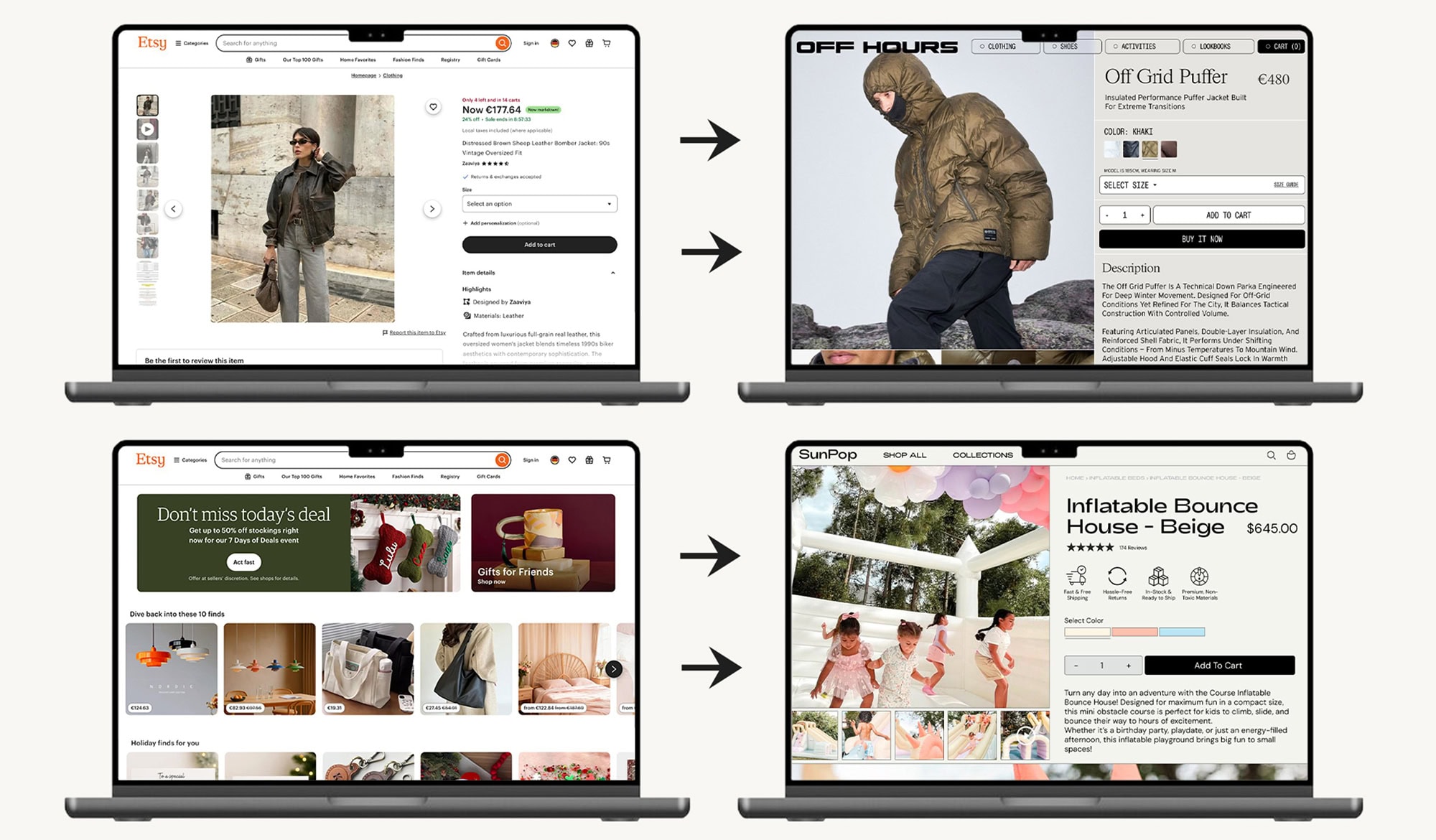This guide helps you determine whether Shopify is the right platform to support your current needs and future growth. It includes a detailed readiness checklist, an analysis of the platform’s pros and cons, and profiles of the businesses best suited for the Shopify ecosystem.
1. The Shopify Readiness Checklist
Before committing to any platform, a business must honestly assess its operational and strategic preparedness. The following checklist provides a framework for that assessment.
Product Data Cleanliness
Question: Do you have clean, standardized data for all products (SKUs, weights, dimensions, high-resolution images)?
Insight: Shopify thrives on structured data. Poor data leads to shipping errors and integration headaches.
Fulfillment Strategy Defined
Question: Do you know where your inventory will be stored and how orders will be fulfilled (in-house, 3PL, dropshipping)?
Insight: Your fulfillment strategy dictates the setup of Locations, Shipping Profiles, and necessary inventory apps.
International Ambition
Question: Do you plan to sell to multiple countries or regions within the next 1–2 years?
Insight: Shopify Markets is a powerful tool, but it requires a clear strategy for currency, language, and tax setup from the start.
Marketing Stack Identified
Question: Have you chosen your core marketing tools (Email Marketing, CRM, Analytics)?
Insight: Shopify integrates seamlessly with major tools such as Klaviyo and GA4, but integrations must be configured correctly during development.
Budget for Apps and Theme
Question: Is there a budget for a premium theme (approximately $350) and essential paid apps (e.g., reviews, subscriptions)?
Insight: While Shopify is robust, specialized functionality often requires paid, third-party apps.
Content Management Needs
Question: Is your website primarily focused on e-commerce (60% or more), or is it heavily reliant on complex content, blogging, or service booking?
Insight: Shopify excels at selling; however, websites with complex, non-e-commerce content needs may be better suited to other platforms.
Team Technical Comfort
Question: Is your team comfortable managing a modern e-commerce backend (adding products, fulfilling orders, using a theme editor)?
Insight: Shopify’s backend is highly user-friendly, minimizing the need for constant developer support for daily tasks.
2. Shopify Pros and Cons: An Unbiased Assessment
Shopify is a specialized e-commerce platform, and its strengths and weaknesses are directly tied to that focus.
2.1 The Pros: Why Shopify Excels
Shopify powers about 10% of all e-commerce in the U.S., and for good reason—it’s built specifically for selling, making it one of the best tools for the job.
E-commerce Specialization
Shopify is designed from the ground up for e-commerce. Store owners can easily manage products (including variants, color swatches, size charts, files, etc.), collections, shipping rates, taxes, and inventory across multiple locations and markets. Every feature, theme, and app is geared toward conversion and scaling sales.
Security and Trust
As a closed-source, secure system, Shopify’s team manages all security aspects, reducing the risk of hacking vulnerabilities common in open-source platforms. The standardized checkout page builds trust and credibility—a key factor for first-time buyers.
Scalability and Extensibility
Shopify scales seamlessly—from small startups to billion-dollar enterprises. If a needed feature isn’t built-in, the Shopify App Store offers thousands of quality-vetted, third-party extensions for added functionality.
User-Friendly Interface
The back-end interface is intuitive and easy to use. Store owners can add or modify products and update designs without code. The Theme Editor allows easy customization, such as adding promotional banners or countdown timers, without permanent code changes.
Developer Flexibility
Although the platform itself is closed-source for security, the theme code is open, allowing developers to customize store design and functionality without limits.
Omni-Channel and Localization
Shopify supports in-person sales, social commerce, and wholesale via integrated tools. It also provides a localized shopping experience through Shopify Markets, supporting automatic translation, local currencies, and region-specific payment methods like AliPay.
Efficient CMS
Shopify’s content management system allows global template updates, ensuring consistency and saving significant time for ongoing design or layout changes.
2.2 The Cons: Limitations to Consider
While Shopify is powerful, it does have limitations, primarily because of its closed-source nature.
Transaction Fees for Non-Shopify Payments
If you use a third-party payment gateway (such as Stripe or PayPal) instead of Shopify Payments, Shopify charges an additional transaction fee—typically between 0.5% and 2.0%—on top of the gateway’s fee.
Custom Checkout Limitations
The checkout process is largely standardized for security and trust. Only merchants on Shopify Plus can fully customize checkout using the checkout.liquid file. This can limit branding or complex B2B checkout experiences for smaller plans.
Cost of Apps
Although the App Store enhances functionality, reliance on multiple paid apps can significantly increase monthly costs beyond the base subscription fee.
Non-E-commerce Content
If your site is less than 60% focused on e-commerce, Shopify may not be the best choice. Its tools and structure are optimized for selling, not for managing complex editorial or service-based content.
3. Best and Worst Candidates for Shopify
Understanding Shopify’s core strengths helps identify who benefits most—and who might struggle with the platform.
3.1 Best Candidates: The Ideal Shopify User
The ideal Shopify customer is a direct-to-consumer (DTC) brand that values security, scalability, and ease of use.
The Scalable DTC Brand
A small brand with high growth potential—such as a startup selling one product but planning for international expansion—will thrive on Shopify’s scalable infrastructure.
The Omni-Channel Retailer
Businesses that sell online, in-store (via Shopify POS), and on social media or marketplaces benefit from centralized inventory and order management.
The Product-Focused Business
Brands that sell physical or digital goods as their primary function can take full advantage of Shopify’s conversion-optimized themes and powerful product management tools.
The Security-Conscious Brand
Companies that prefer to outsource server maintenance, PCI compliance, and security updates to a reliable provider will find Shopify ideal.
3.2 Worst Candidates: When to Consider Alternatives
Certain types of businesses may find Shopify’s structure limiting for their needs.
The Content-First Publisher
Brands built around editorial or magazine-style content may find platforms like WordPress or Webflow more suitable.
The Highly Customized B2B Platform
Enterprises requiring deep ERP integrations, complex pricing logic, or a non-standard checkout flow may outgrow Shopify’s capabilities—even on Shopify Plus.
The Service-Only Provider
Consultants, booking-based businesses, or service providers that don’t sell physical products may find dedicated service platforms more efficient.
The Budget-Sensitive Startup
While Shopify’s entry-level pricing is fair, the cumulative cost of paid apps, a premium theme, and transaction fees can be prohibitive for extremely tight budgets.
Every great brand starts with the right foundation
Shopify can take you further — when you’re ready to grow smarter, not harder.








.jpg)

